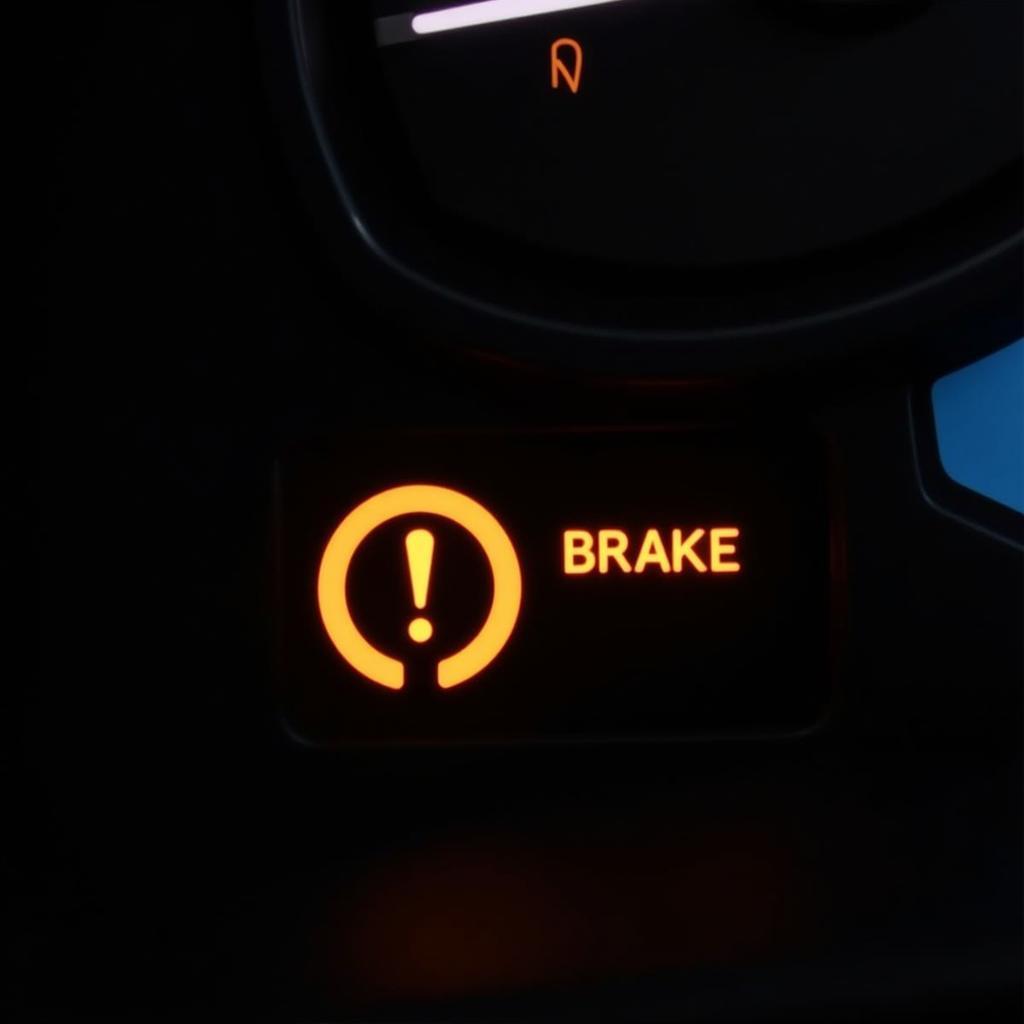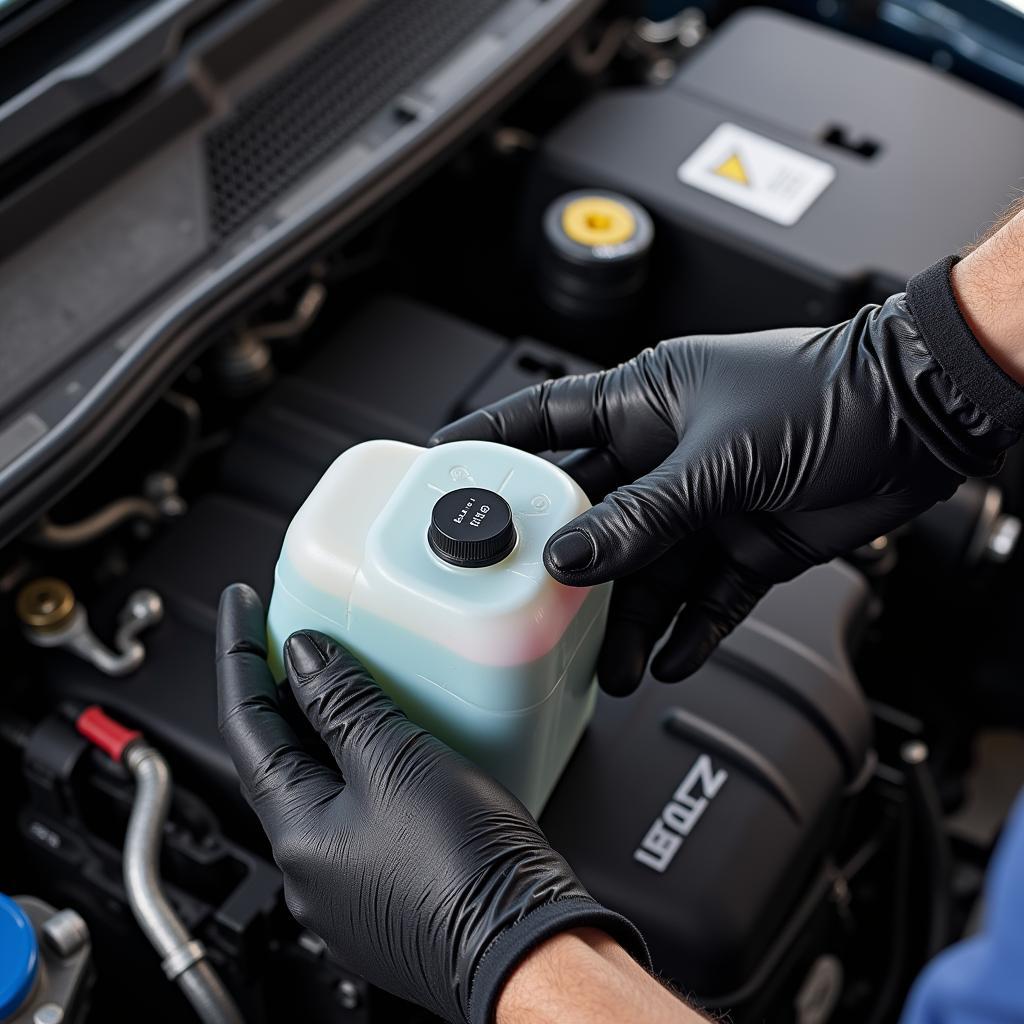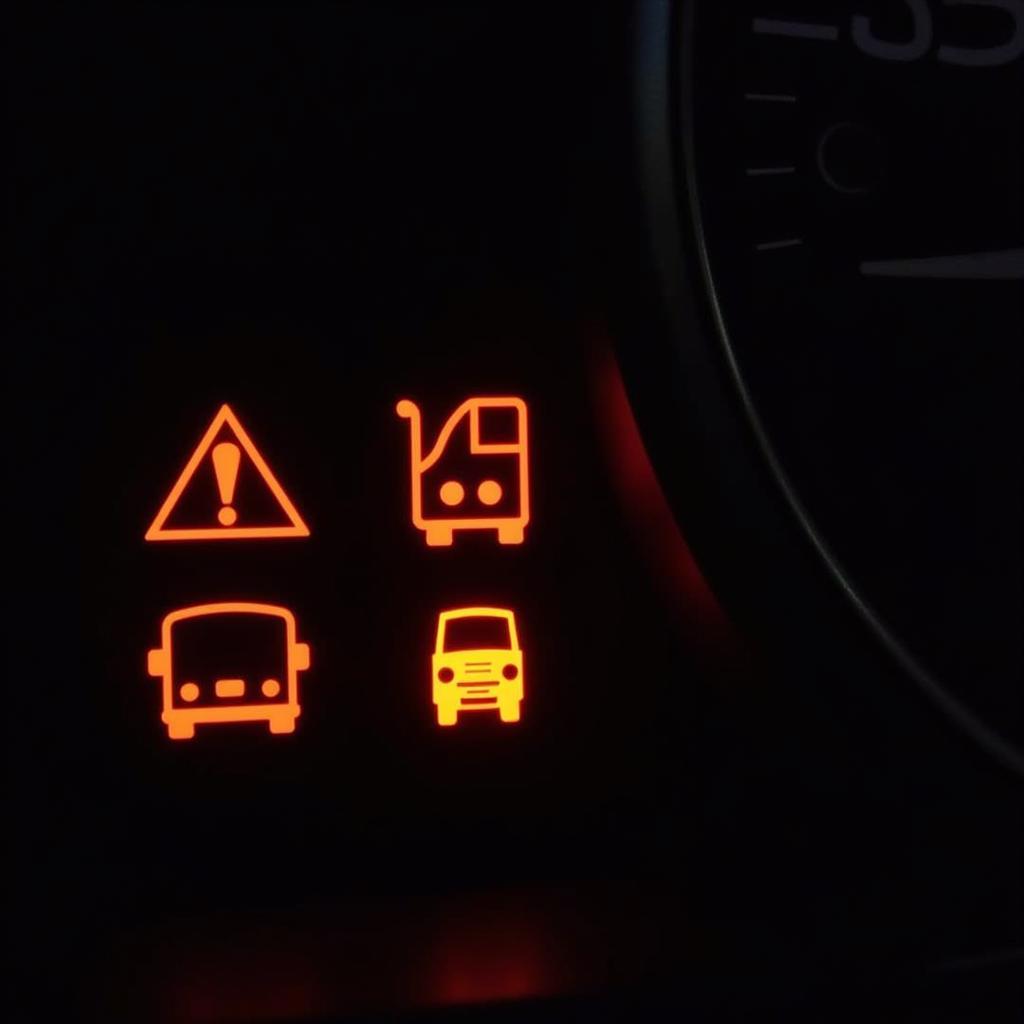The low brake fluid warning light flashing on your Ford Focus dashboard is a serious issue that should never be ignored. This amber or red light usually resembles a circle with parentheses surrounding an exclamation point and the word “BRAKE” next to it. It indicates a potential problem with your braking system, possibly due to low brake fluid. While several factors can cause this warning light to activate, this article will focus on how to reset the low brake fluid warning in your Ford Focus.
 Ford Focus Low Brake Fluid Warning Light
Ford Focus Low Brake Fluid Warning Light
Understanding the Low Brake Fluid Warning
Before attempting to reset the warning light, it’s crucial to understand why it illuminates in the first place. The most common reason is low brake fluid, which can occur due to:
- Leak in the braking system: A leak in the brake lines, calipers, or wheel cylinders can lead to a loss of brake fluid.
- Worn brake pads: As brake pads wear down, the brake calipers need more fluid to engage the brakes, potentially triggering the warning light.
- Faulty brake fluid level sensor: A malfunctioning sensor might incorrectly indicate low brake fluid even if the levels are adequate.
When to Seek Professional Help
While resetting the low brake fluid warning light is possible, it’s essential to remember that this is a temporary solution. If the underlying issue isn’t addressed, the light will reappear, and you risk compromising your safety. Seek immediate professional help if:
- You notice a puddle of fluid under your car.
- Your brake pedal feels spongy or goes closer to the floor than usual.
- You hear unusual grinding or screeching sounds when braking.
- You are unsure about performing the reset yourself.
 Checking Ford Focus Brake Fluid Level
Checking Ford Focus Brake Fluid Level
Step-by-Step Guide to Resetting the Low Brake Fluid Warning
If you’re confident that the warning light is triggered due to a minor issue or a faulty sensor and possess basic automotive knowledge, you can attempt to reset the warning. Here’s a step-by-step guide:
- Park your Ford Focus on a level surface and engage the parking brake.
- Locate the brake fluid reservoir. It’s usually located at the back of the engine bay, on the driver’s side. Consult your owner’s manual for the exact location.
- Visually inspect the brake fluid level. The reservoir will have minimum and maximum markings. If the fluid level is below the minimum mark, add the appropriate DOT 3 or DOT 4 brake fluid (as recommended in your owner’s manual) to the maximum line.
- Start the engine and let it idle for a few minutes. This will allow the new brake fluid to circulate throughout the system.
- Turn off the engine and check the brake fluid level again. If the level has dropped significantly, it indicates a leak, and you should seek professional help immediately.
- If the fluid level remains stable, take your Ford Focus for a short drive. Apply the brakes gently a few times to help reset the sensor.
- Check the warning light. If the light has turned off, you have successfully reset the low brake fluid warning. However, remain vigilant and monitor your brake fluid level regularly.
Expert Insights
“Remember, resetting the low brake fluid warning light is not a substitute for proper brake system maintenance,” says John Miller, a certified automotive technician with over 20 years of experience. “Regularly check your brake fluid level, inspect your brake pads, and address any leaks immediately. These preventative measures will ensure your Ford Focus’s braking system remains in optimal condition and keep you safe on the road.”
 Ford Focus Brake System Inspection
Ford Focus Brake System Inspection
Conclusion
Resetting the low brake fluid warning light on your Ford Focus can be a straightforward process if you identify a minor issue or a sensor malfunction. However, it’s crucial to remember that this is a temporary solution, and addressing the root cause of the warning is paramount. Never ignore this warning sign, as it could compromise your safety and others on the road. When in doubt, always seek professional assistance from a qualified mechanic.

